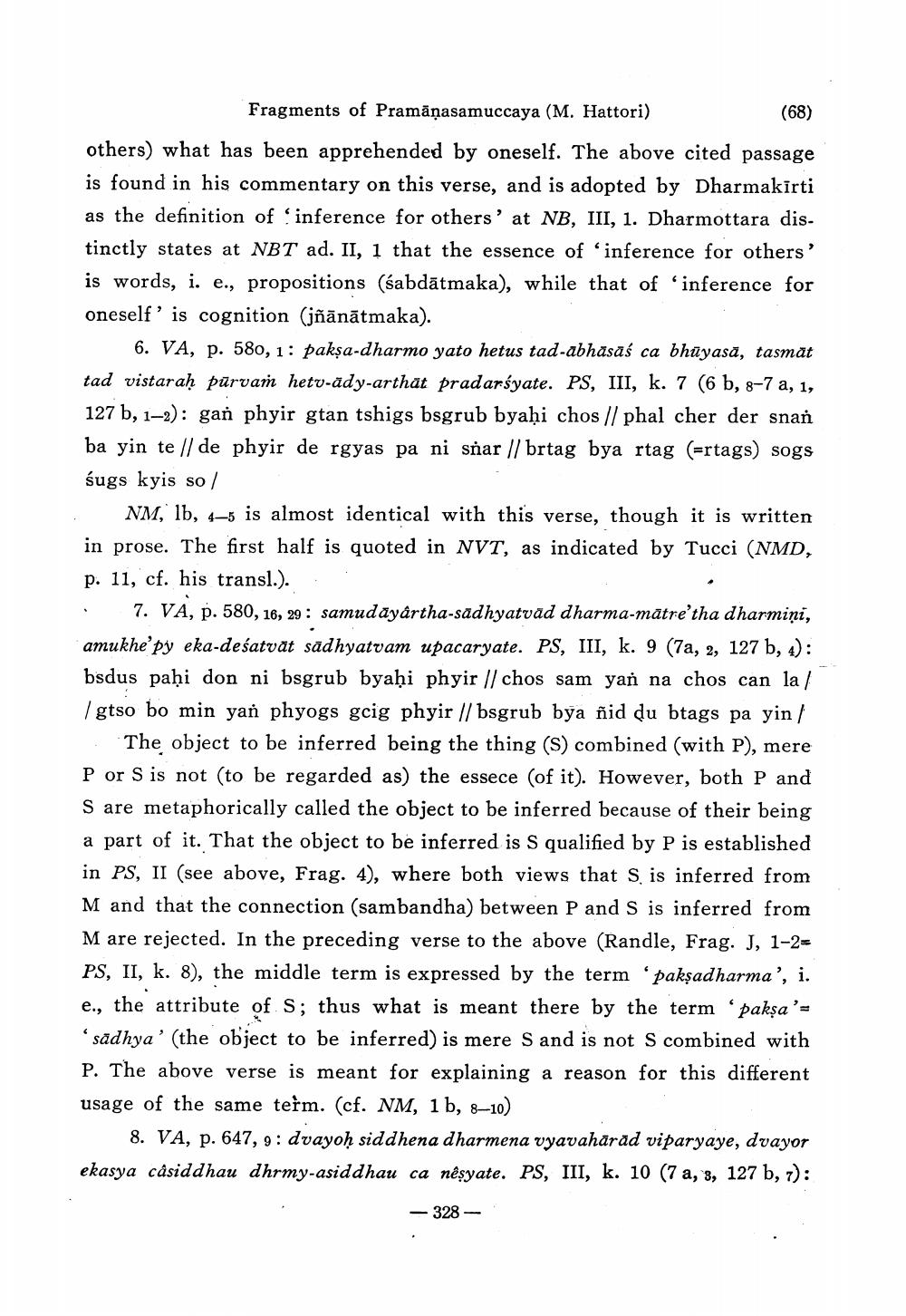Book Title: Fragments Of Pramana Samuccaya Author(s): Massaki Hattori Publisher: Massaki Hattori View full book textPage 3
________________ Fragments of Pramāṇasamuccaya (M. Hattori) (68) others) what has been apprehended by oneself. The above cited passage is found in his commentary on this verse, and is adopted by Dharmakīrti as the definition of 'inference for others’ at NB, III, 1. Dharmottara distinctly states at NBT ad. II, 1 that the essence of 'inference for others' is words, i. e., propositions (sabdātmaka), while that of 'inference for oneself' is cognition (jñānātmaka). 6. VA, p. 580,1: pakşa-dharmo yato hetus tad-abhāsāś ca bhūyasă, tasmat tad vistaraḥ pūrvam hetv-ady-arthat pradarśyate. PS, III, k. 7 6 b, 8-7 a, 1, 127 b, 1–2): gan phyir gtan tshigs bsgrub byaḥi chos // phal cher der snan ba yin te // de phyir de rgyas pa ni snar // brtag bya rtag (=rtags) sogs śugs kyis so / NM, lb, 4–5 is almost identical with this verse, though it is written in prose. The first half is quoted in NVT, as indicated by Tucci (NMD, p. 11, cf. his transl.).. : 7. VA, p. 580, 16, 29: samudayârtha-sadhyatvad dharma-matre'tha dharmiņi, amukhe’py eka-deśatvāt sādhyatvam upacaryate. PS, III, k. 9 (7a, 2, 127 b, 4): bsdus paḥi don ni bsgrub byaḥi phyir // chos sam yan na chos can la/ Igtso bo min yan phyogs gcig phyir // bsgrub bya ñid du btags pa yin/ The object to be inferred being the thing (S) combined (with P), mere P or S is not (to be regarded as) the essece (of it). However, both P and S are metaphorically called the object to be inferred because of their being a part of it. That the object to be inferred is S qualified by P is established in PS, II (see above, Frag. 4), where both views that S is inferred from M and that the connection (sambandha) between P and S is inferred from M are rejected. In the preceding verse to the above (Randle, Frag. J, 1-2= PS, II, k. 8), the middle term is expressed by the term 'pakşadharma', i. e., the attribute of S; thus what is meant there by the term paksa sādhya' (the object to be inferred) is mere S and is not S combined with P. The above verse is meant for explaining a reason for this different usage of the same teim. (cf. NM, 1b, 8-10) 8. VA, p. 647, 9: dvayoh siddhena dharmena vyavahārad viparyaye, dvayor ekasya câsiddhau dhrmy-asiddhau ca nêsyate. PS, III, k. 10 (7 a, 3, 127 b, 7): - 328 -Page Navigation
1 2 3 4 5 6
